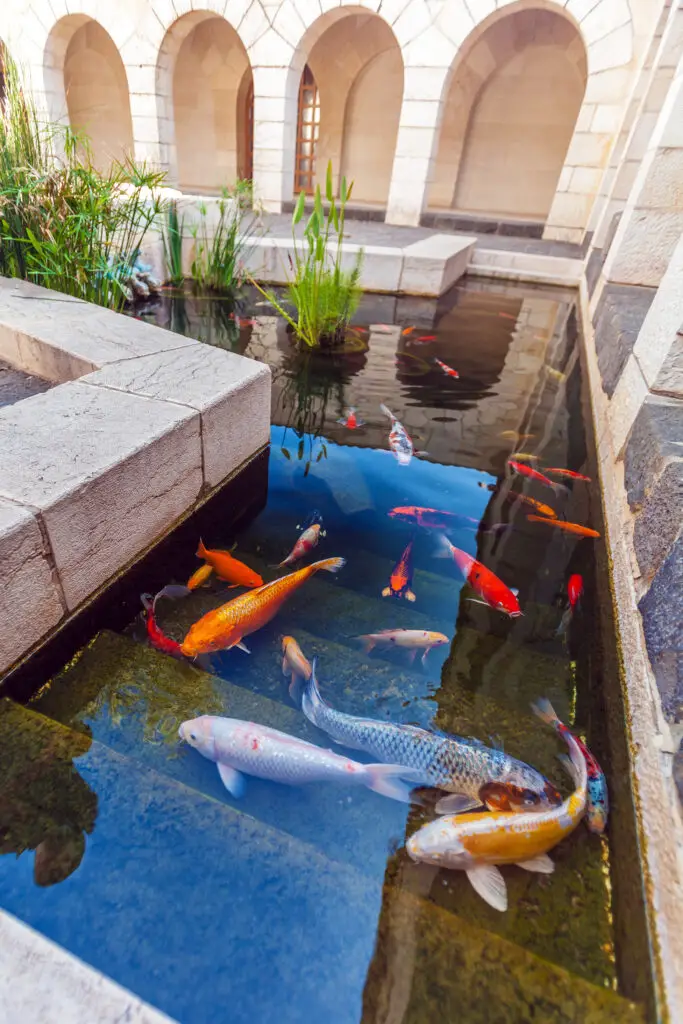
When it comes to looking after koi fish, there are some essential aspects of their pond environments that, as their owner, you need to maintain. One of these crucial aspects is the pH of a koi pond’s water. Fluctuating or incorrect pH levels can ultimately lead to the death of your koi fish, so maintaining the correct pH levels is of absolute importance.
There are several ways to maintain your koi ponds’ pH, including removing plant debris from the water and regularly changing the water. Keeping algae levels at a minimum, ensuring no runoff from untreated concrete, pond ornaments, or brick pavings lands in your pond, and regular water pH tests.
Knowing why the proper pH levels are needed and how to correct incorrect levels in a koi pond is also necessary to raise happy and healthy koi. Understanding why these steps are crucial in maintaining your koi ponds’ pH will help you be aware of them. This awareness will ensure that the steps are followed, keeping the pH of your pond at the correct levels.
Pro Tip: If you’re tired of wasting money and making costly mistakes on the koi-keeping hobby or are thinking about buying koi fish but don’t know where to start, I strongly suggest you check out this ebook. I recently read this ebook, and it contains SO much useful information, such as:
- 3 proven steps to identify koi fish diseases
- WARNING: 3 things you should NEVER do when it comes to caring for koi
- When to seek professional help when it comes to looking after your koi
Maintaining The Correct pH Levels In Your Koi Pond
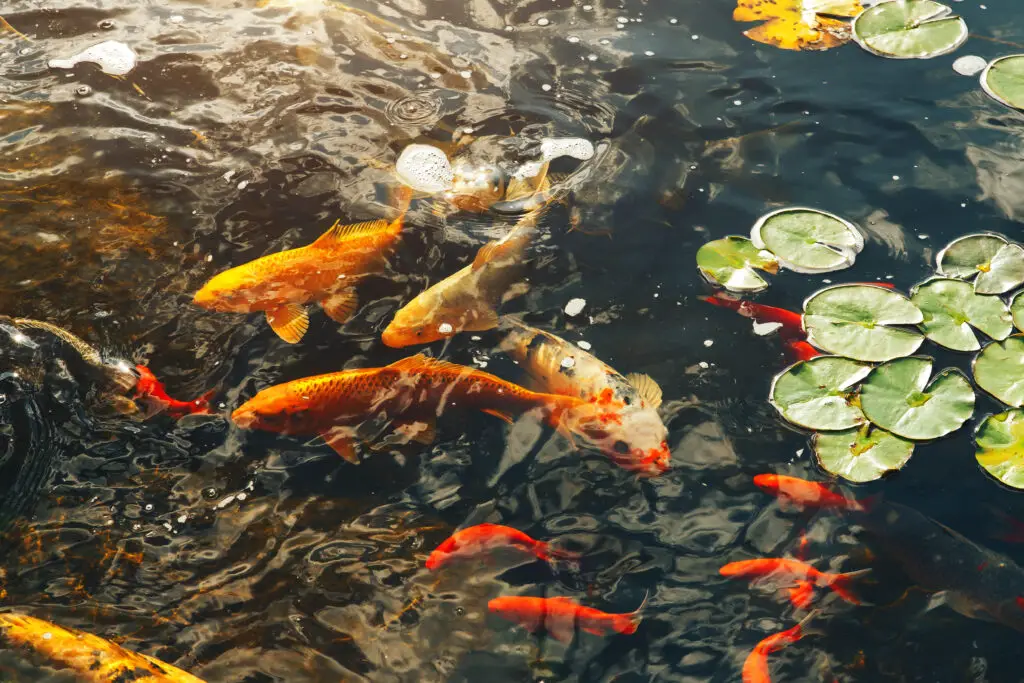
Koi fish are somewhat finicky when it comes to their likes and dislikes. For one thing, they have a life-or-death preference for the pH of their water. They grow optimally in water with a pH of 7 – 8.6, but their perfect conditions would be at a pH of 7.5. They will survive in waters that range from pH 6 – 9, although they might not be too happy about it.
It is usual for a koi pond’s pH to fluctuate a bit during the day due to natural processes in the water. The real issue starts to rise if your pH drops below or rises above the happy medium, stays there, or fluctuates more than 1 point during a day. In these cases, you might have to employ specific corrective methods to fix the problem. What you want to go for is a natural way that prevents these increases and decreases from happening in the first place.
If the pH levels of your pond’s water drop below 7, it is getting too acidic for your koi fish, and if it goes higher than 8.6, the water is getting too alkaline. There are often underlying natural or chemical causes for these fluctuations, and therefore there are methods that you can employ to try and prevent these from happening.
The following are a few preventative methods to maintain the correct pH in your koi pond.
Remove Dead Or Decaying Plant Debris

Decaying organic matter can raise the acidity level in your water, thereby lowering the overall pH of the water. Fallen leaves can become a severe problem during the fall. Keeping your pond free of decaying organic matter can help maintain the pH of your koi pond water.
Keep Algae Levels To A Minimum
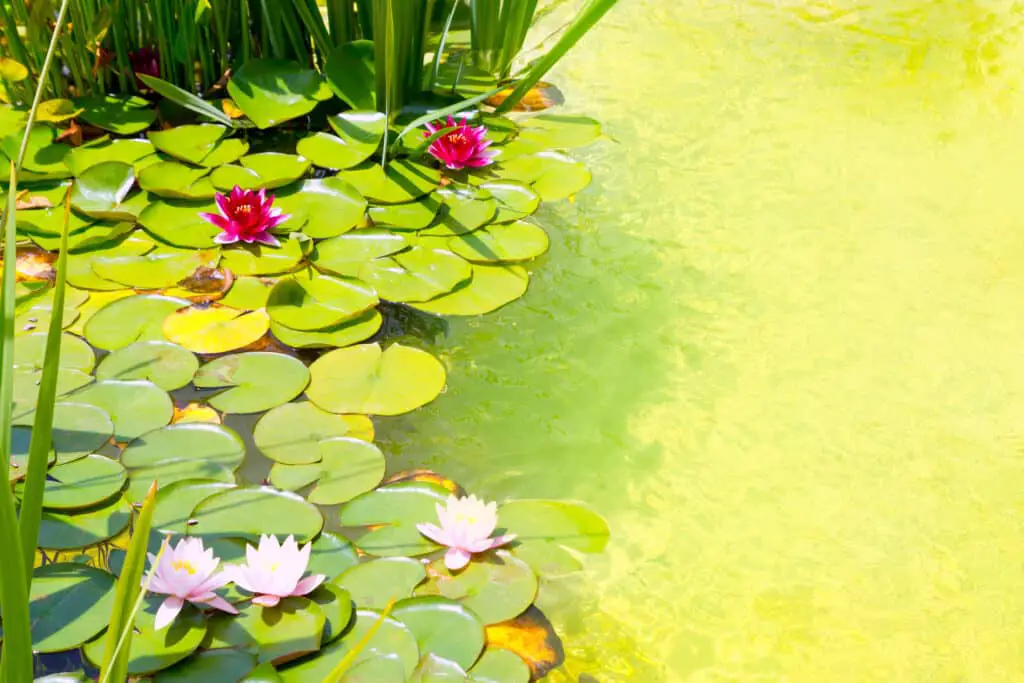
Photosynthesis uses up the carbon dioxide in the water, which can cause your koi pond water to have increased pH levels. Increased algae levels mean more photosynthesis occurs in the water. Preventative measures include removing the algae continuously, using a UV clarifier as part of your filtration system, or reducing the amount of sunlight that shines onto your pond.
Preventing Substance Leak Into Your Pond
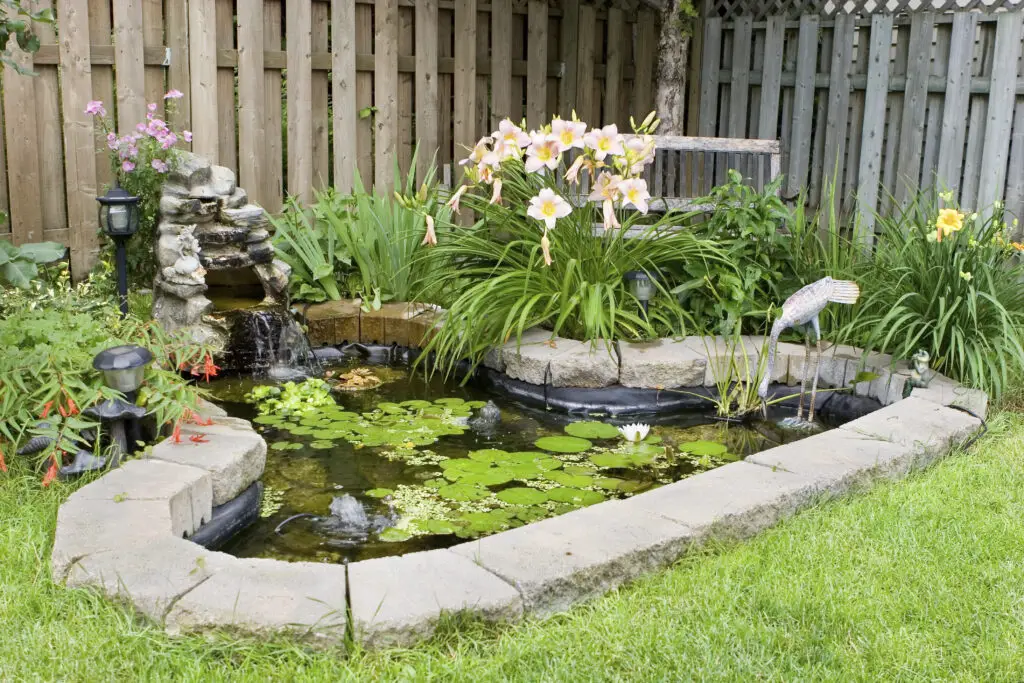
Often the concrete or cement near your pond has not been appropriately treated. The rain washes the leaked chemicals, such as lime, into your pond when it rains. These chemicals can leak out of several untreated things, such as the paving surrounding your pond, your pond itself, rock fountains, and pond ornaments. Ensuring that you treat all of these things correctly will prevent runoff into your pond, helping to maintain the correct pH levels.
Changing Your Koi Pond Water Regularly
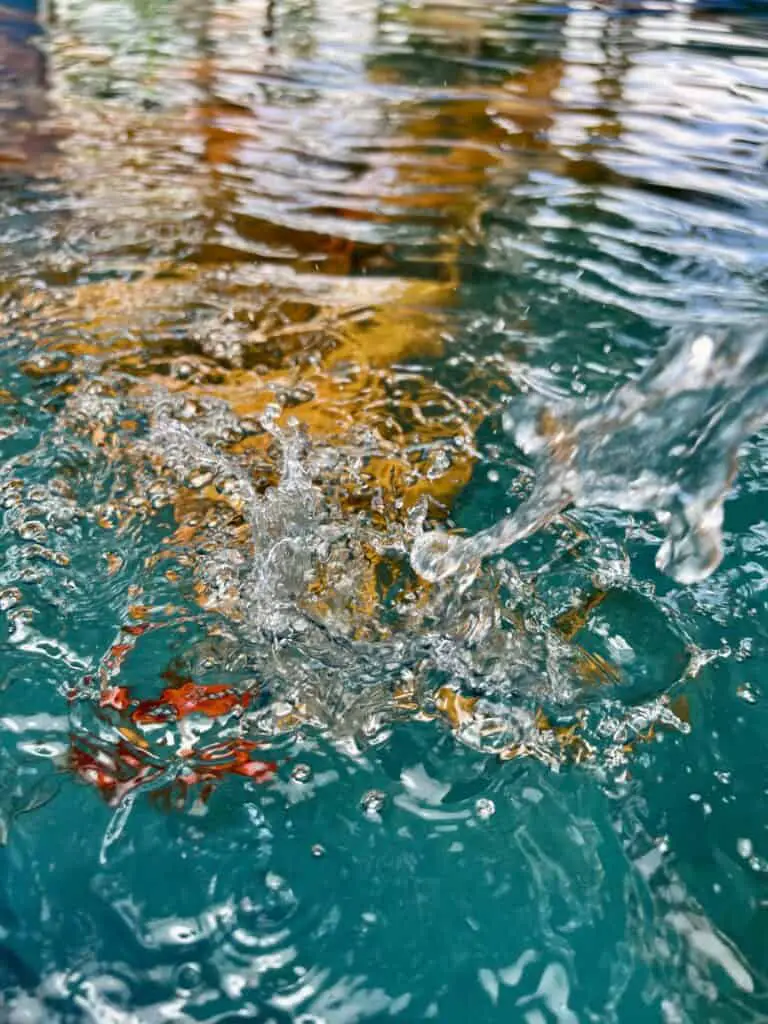
Most tap water sits at a pH level of around 7, and when you give your koi pond a water change, you are introducing water with the correct pH level into your pond. Most koi owners will change the water of their pond quite often. You usually siphon or pump out 25% of your pond’s water and fill it with fresh water during this process.
An essential step is to ensure you have tested your tap water before filling your pond. Always ensure that the pH of your tap water is suitable, as you don’t want to add water that has either a too-low or too-high pH level. Incorrect levels will cause your ponds’ overall pH to fluctuate, and if the levels fluctuate too drastically, it can be detrimental to the health of your koi.
Do Regular pH Tests On Your Koi Pond Water

Regular pH testing of your koi pond water will help you keep tabs on how your pH levels are doing. A good idea would be to test first thing in the morning and then again in the afternoon to get a reliable estimation of your pond’s pH levels. These fluctuations should not be too drastic and are usually around 0.5 – 1 point on the pH scale due to natural causes. There are a few different ways to test the pH of your water.
The first is using litmus paper, a strip of paper that will change color depending on whether your water is alkaline or acidic. The litmus will turn blue if the water is alkaline or above pH 8.3 and red if the water is acidic or below 4.5. It will turn purple if your water is neutral or in between those levels. Litmus paper is not the most accurate way to check your pH.
The second way to test the pH levels of your koi pond is by using a water testing kit. In this method, you would collect a vial of your pond water and then drop three drops of the testing solution into the vial. Shake the vial, and then use the chart to match up the color of the solution. Matching the colors will give you a rough estimate of the pH levels in your koi pond.
The third way is to purchase a digital pH tester, the most accurate method to test your koi pond’s pH. All you have to do with the digital pH meter is stick the meter into the water and press the button. It will take roughly two minutes to get a reading as accurate as two decimal places.
What To Do If Your Koi Ponds pH Is Stable But Not Optimum?
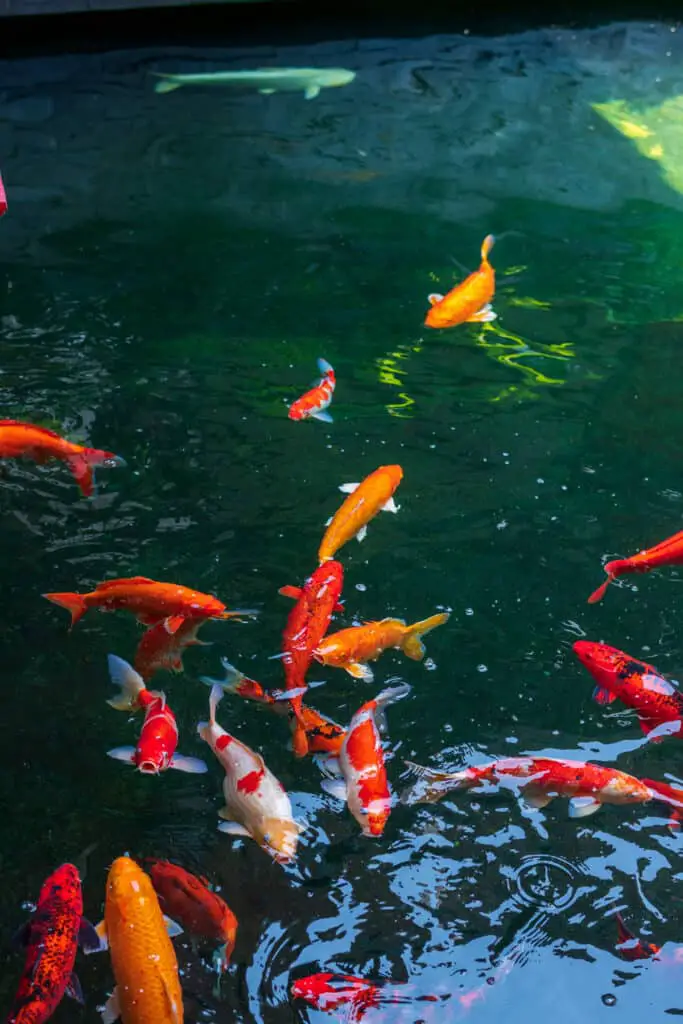
Some koi ponds’ pH levels are stable but sitting at around 9 or even 6.6 on the pH scale. In these instances, if your koi fish look healthy and happy and are feeding optimally, it’s best not to try and correct the pH levels into something you might think is more appropriate. When trying to fix what you consider a problem, you can often make it worse, making your pH levels drop too low or too high.
Koi fish can survive in pH levels that are between 6 and 9. If your koi ponds’ pH is sitting outside the preferred zone, it would be good to keep an eye on your fish, and if they start showing signs of distress or ill health, then try to correct the pH.
How Will High pH Affect Your Koi Fish?
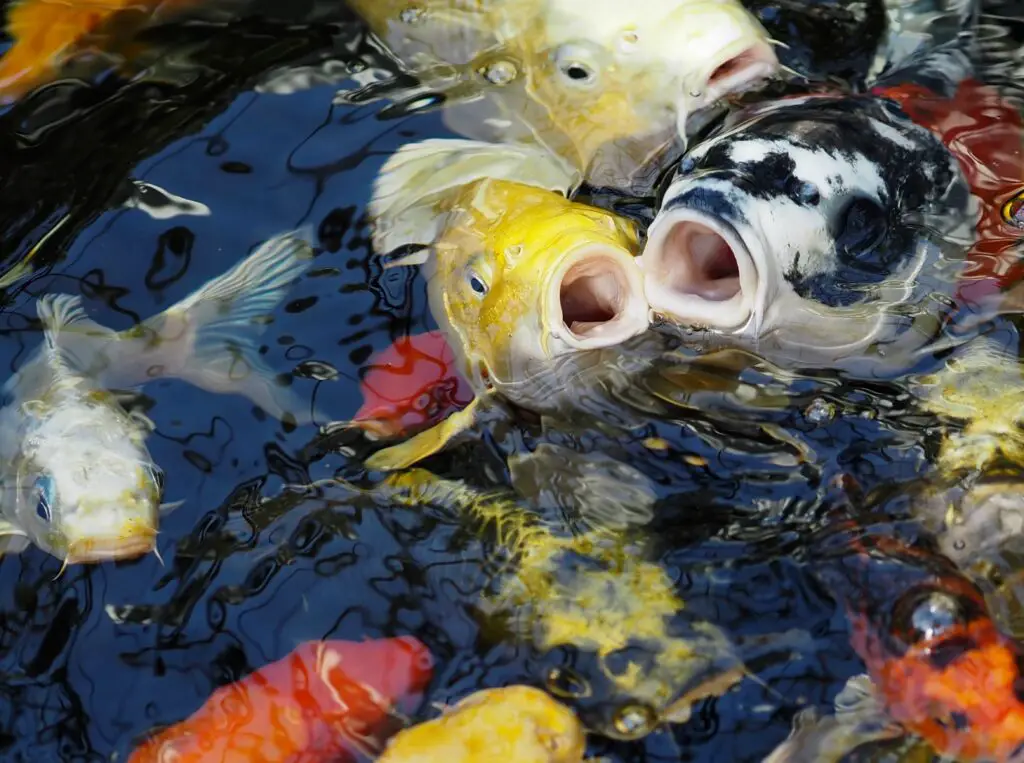
PH that is too high, anything over 8.6, can sometimes cause a condition called Alkalosis to occur in your koi fish. Symptoms include isolation, excess slime production, resting at the bottom of the pond, gasping at the pond’s surface, blood-streaked fins, and finally, death. Once your fish has started to show symptoms of Alkalosis, it is tough to reverse the problem, and it could ultimately cause the death of your koi fish.
How Will Low pH Affect Your Koi Fish?
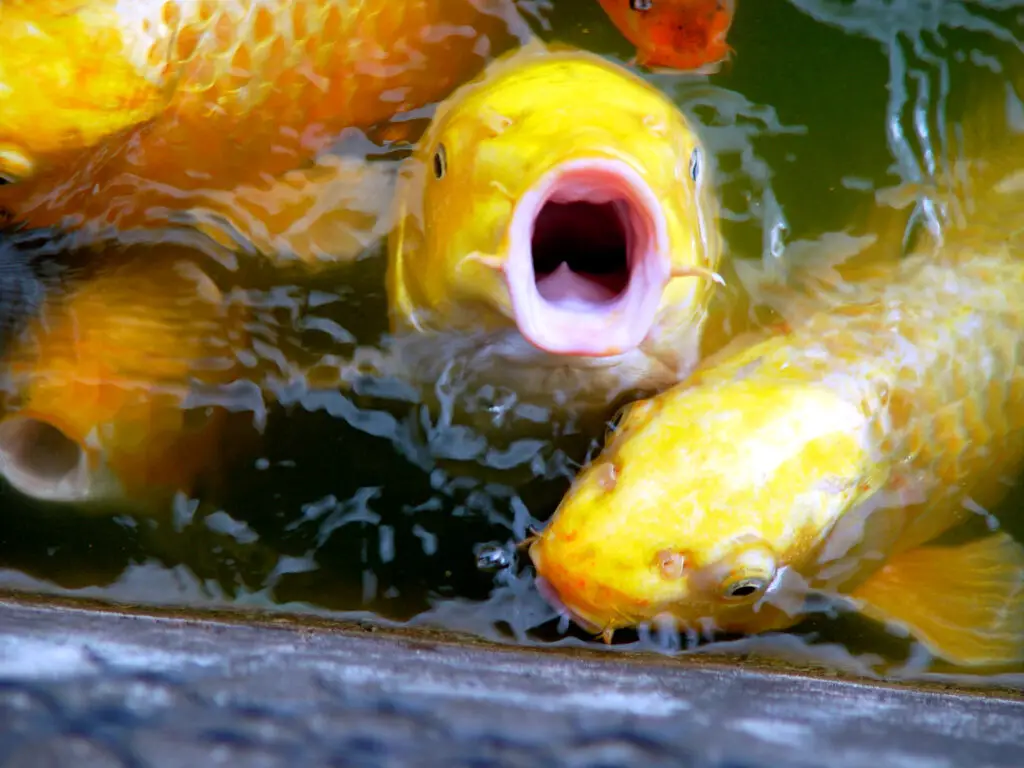
pH levels that are too low can result in your fish developing a condition called Acidosis. The symptoms of Acidosis are very similar to those of Alkalosis. They include a decreased appetite, isolation, excess slime production, resting on the bottom of the pond, blood-streaked fins, and ultimately the death of your koi fish. Luckily, you can rectify the symptoms of Acidosis if you can raise your ponds’ pH to suitable levels again.
How To Decrease Your Koi Ponds pH
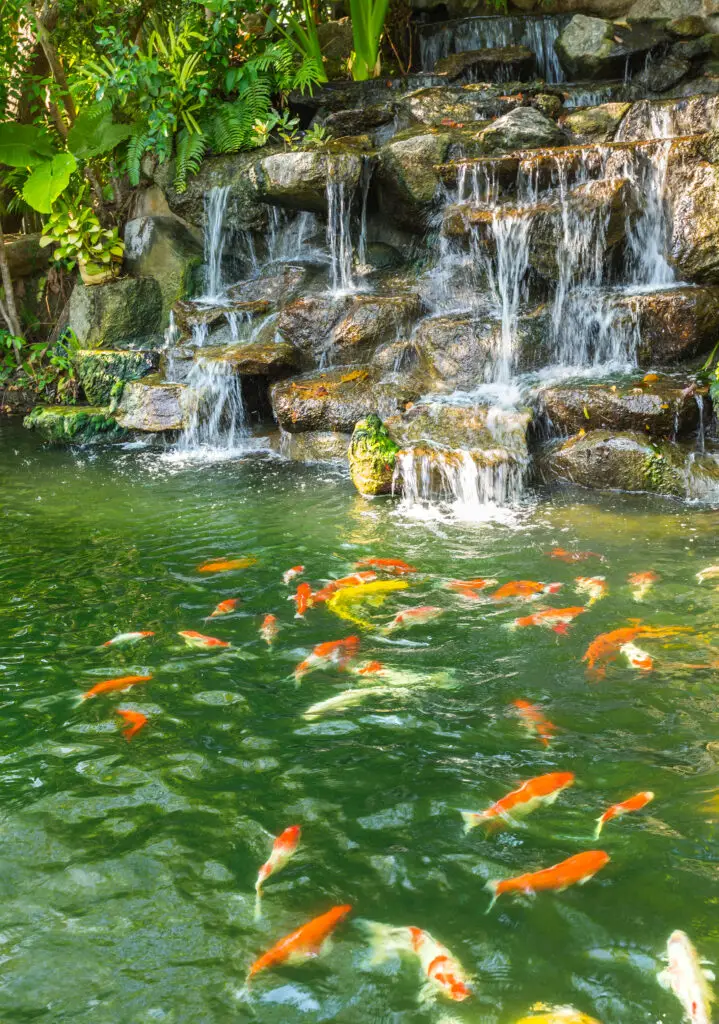
If you find that your koi ponds’ pH has risen too high and your koi are now at risk for developing Alkalosis, you might need to consider trying to lower the pH of your pond. Luckily, there are several relatively basic methods that you can employ that should do the trick. One thing to remember before treating high pH is that all treatments should be done in small doses so that you correct levels slowly so as not to shock your koi fish.
Changing The Water Of Your Koi Pond
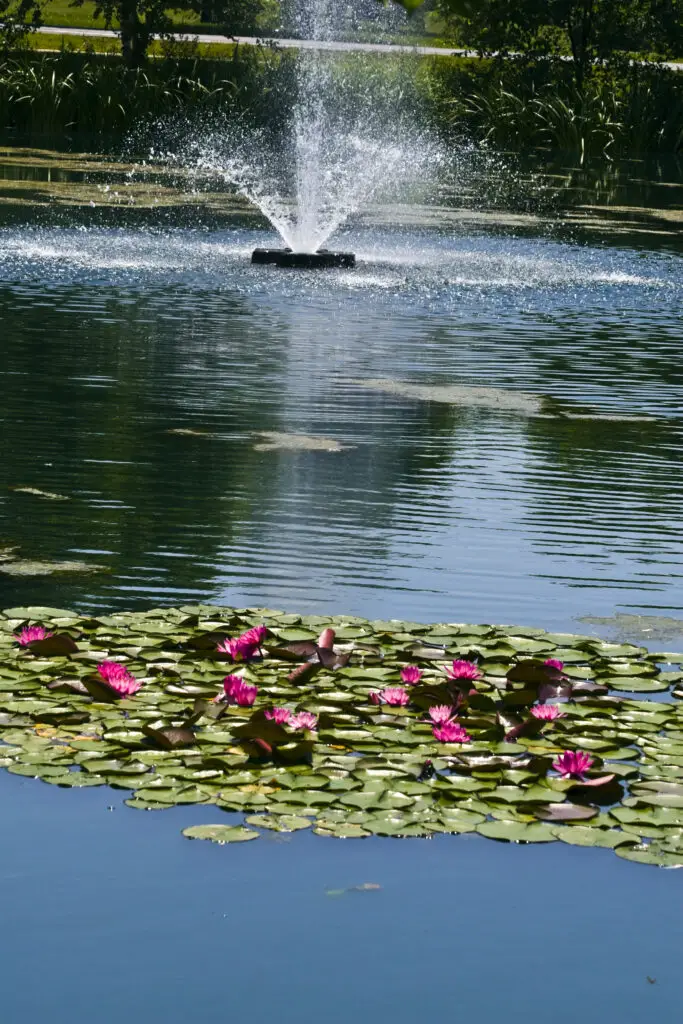
Filter or siphon out 25% of the water in your koi pond and refill it with tap water. Ensure that you check the pH of the tap water before adding it to your Koi pond to ensure it is acceptable. Average tap water has a pH of around 7, bringing your pond’s pH down to a more suitable level.
Applying Alum (Aluminium Sulfate) To Your Koi Pond
Alum is a treatment that will quickly lower the pH levels in your pond by reacting in the water to form an acid. Not only does it reduce your pond water pH, but it also helps to remove algae in your pond by reducing photosynthesis and decreasing algal biomass.
Therefore, this solution helps the immediate problem and tackles an underlying reason for the increase in pH. The effect of Alum on the pH levels is not permanent, and you may find that you will need to apply it a few times before it rectifies the problem permanently. Keep testing the pH of your pond for several days to ensure that you have fixed the problem.
Removing Excess Algae From Your Koi Pond
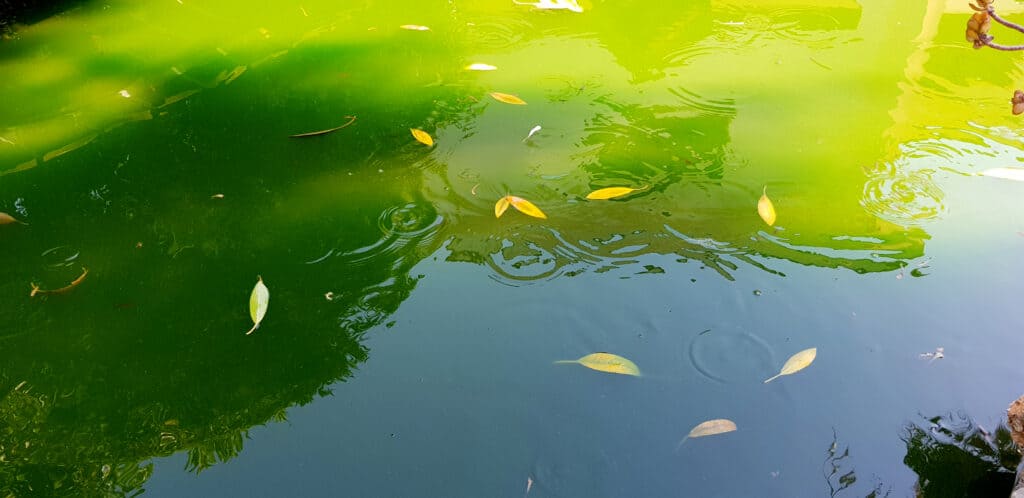
Photosynthesis uses up the carbon dioxide in the water, increasing the pH levels. Excess amounts of algae can increase the levels of photosynthesis in your pond. Removing the algae will decrease photosynthesis, reducing the pH of the water in your pond.
Applying Chemicals To Reduce The pH Of Your Koi Pond
There are several shop-bought chemicals that you can apply to your koi pond, which should help reduce the pond’s pH. Ensure you follow the package instructions carefully and do not over-apply any chemicals. You also want to lower the pH as slowly as possible not to shock your koi, which can ultimately lead to their deaths.
How To Increase Your Koi Ponds pH
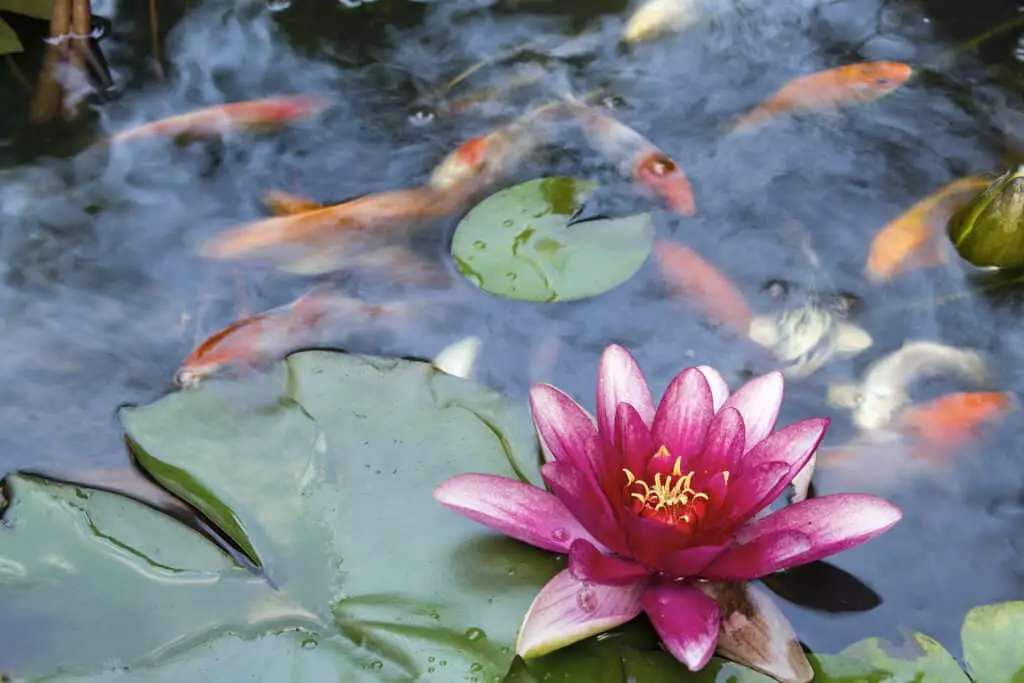
If you find that the pH of your koi pond has dropped too low and your koi are now at risk of developing Acidosis, you will need to find a solution to raise the water’s pH. Just like lowering your koi pond’s pH, you will need to increase the pH of the water slowly so as not to shock your koi fish. Keep testing the pH of your koi pond to ensure that the levels are rising appropriately. Luckily you can employ several different methods to fix this issue.
Changing The Water Of Your Koi Pond
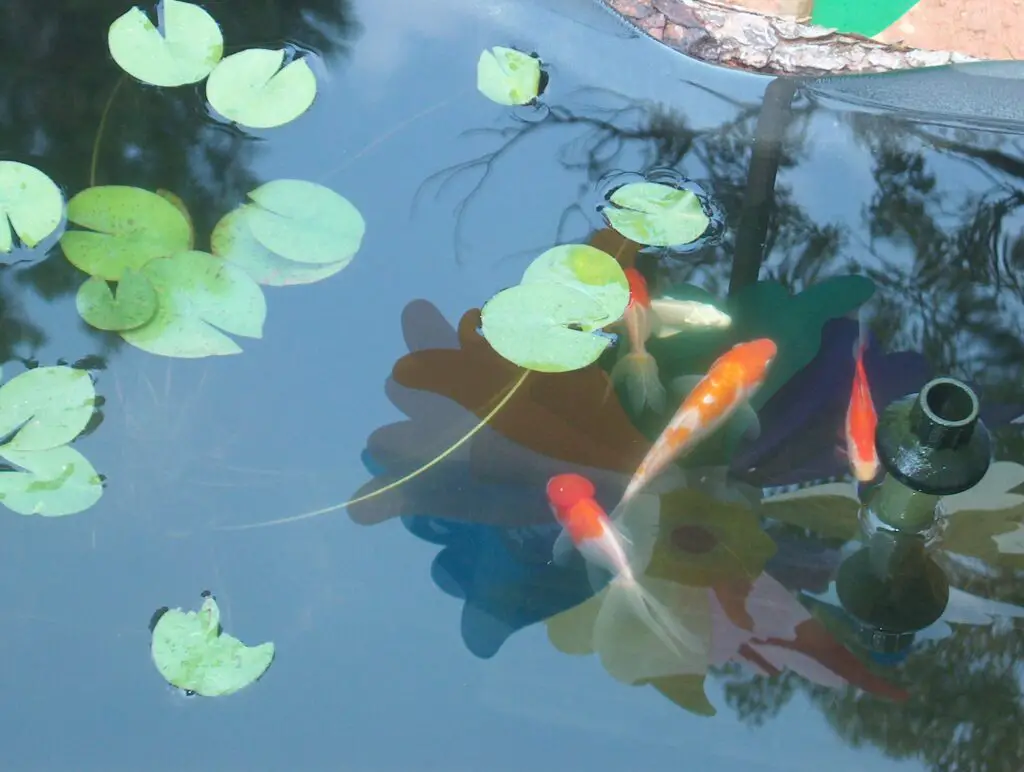
Like lowering the pH, water changes can help increase your koi ponds’ pH levels. Changing out 20 – 25% of the water with fresh alkaline tap water will help raise pH levels. Ensure that you test your tap water first to ensure it is at the correct level to assist you in this scenario.
Applying Baking Soda To Raise The pH Of Your Koi Pond
You can dissolve one teaspoon of baking soda for every 5 – 10 gallons of pond water in this method. The best plan here is to premix the baking soda with some water in a bucket, then pour this mixture into your pond water. Ensure you spread the mixture evenly throughout your pond and that none goes directly onto your koi fish.
Applying Limestone To raise The pH Of Your Koi Pond
Lime will increase the pH of your Koi Pond and improve its overall alkalinity, all the while stabilizing the pH of your koi pond. Use finely ground limestone and add it to the water around the perimeter of your pond. You will need to add 1 ton of limestone for a one-acre pond for this method, and it should increase your pH by 1 point. If your pond is small enough, sprinkle it on top of the water or use a boat.
Other Methods To Raise The pH Of Your Koi pond
Other methods include applying calcium carbonate and eggshells to the water to raise pH levels. There are also store-bought chemicals that will help increase the pH levels of your koi ponds’ water. Ensure you follow the package’s instructions carefully to avoid increasing the pH too quickly.
Conclusion
A koi pond’s pH is essential for your koi fish’s optimal health and growth. Methods that you can employ to maintain your koi pond pH are: removing dead or decaying plant matter, changing your pond’s water regularly, keeping algae levels to a minimum, and preventing substances from leaking into your pond from nearby untreated cement or concrete objects. Regular pH tests will help you monitor your pond’s pH levels, enabling you to maintain them.
References
https://www.quora.com/How-is-the-ph-level-managed-in-a-koi-pond
https://homeguides.sfgate.com/control-ph-levels-ponds-38626.html
https://thefishsite.com/articles/managing-high-ph-in-freshwater-ponds

